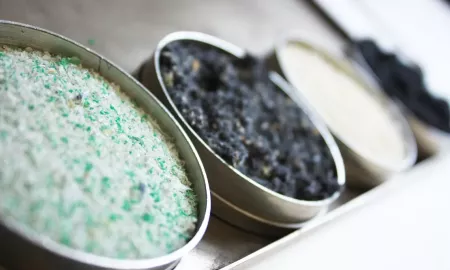Loss on ignition (LOI) testing helps waste management organisations remain compliant with The Landfill Tax (Amendment) Regulations 2015. Here, Sarah Gazzola, commercial manager, Energy & Waste Services, explains the LOI testing process and why it is vital for businesses to understand the chemical make-up of fines in their waste.

In December 2016, the UK Government released its updated statistics on waste, showing that Britain is now producing more than 209 million tonnes of waste annually. Of this, around a quarter (23 per cent) is being sent into one of the country’s 2,000+ landfill sites. This is a figure which the Government is successfully managing to reduce as it redirects more waste away from landfill and prioritises the creation of a circular economy.
One of the key tactics for cutting down on the amount of waste being sent to landfill is ensuring that any recyclable or recoverable materials don’t needlessly end up there. To address this, extra funding and new legislation to incentivise the correct handling and classification of waste has been rolled out over the last few years. This includes the introduction of mandatory loss on ignition testing on ‘fines’ for landfill operators. Fines are small particles of refuse created as a by-product of mechanical waste treatment processes. It is estimated by the HMRC that more than 4.5 million tonnes of these fines are produced in the UK every year.
Proving the value of waste
LOI testing is used by landfill organisations to prove they have low levels of naturally occurring material present within the fines they receive from waste processers to qualify for a significantly lower landfill tax rate.
Under current regulations set by the HMRC, samples must have an LOI value of 10 percent or less to qualify for the lower tax rate of £2.65 per tonne. Any fines that contain a higher LOI value will be subject to a substantially higher tax rate of £84.40 per tonne.
This value is determined by taking representative and consistent samples of fines and then examining them under laboratory conditions. The first stage of the process is to accurately measure the mass of the sample. It is then dried and the sample mass is reduced and screened, removing any particles greater than 20mm. Following this it is ground to give a sample size of less than 2mm. This will then be exposed to temperatures of 440°c in a contained environment, in which all organic matter is burned off, it is then reweighed. The resulting change in mass or ‘loss on ignition’ is then known.
Independent tests, carried out in line with the most recent Government guidance can help those in the waste sector accurately evaluate the chemical content of their waste and correctly classify it under UK law.
Wasting no time
The Government has set some stringent waste targets it needs to meet by 2020, and the level of waste being produced is on the rise. With this in mind, ensuring Britain’s landfill sites are being used in the most efficient way should be a national priority.
By preventing the misclassification of waste, operators in the sector can play an important role in the creation a sustainable future and ensure they never fall short of the requirements for the lower landfill tax rate.
SOCOTEC’s UKAS (No.0001) accreditation was recently extended to include LOI testing for waste fines in line with methods supported by HMRC and Scottish legislation.
Want to find out more about SOCOTEC's waste management services?

You might also like





Add new comment